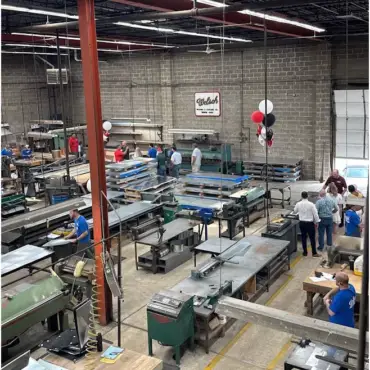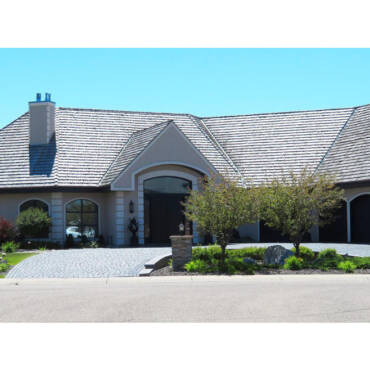Owning a home is a huge responsibility. Besides maintenance, renovations, and bills, you need to do repairs. As a homeowner, one common problem you have to deal with is your HVAC system leaking water.
Such a leak can diminish the performance and efficiency of your HVAC system and damage walls, ceilings, and floors. Furthermore, the accumulation of moisture in some areas can cause mold growth, which presents health risks.
This article looks at what causes water to leak in your HVAC, how the water forms, and how to know when your HVAC leaks water. First things first, HVAC systems leak water due to one or more of the following four problems.
1. Your HVAC Is Leaking Water Because of a Damaged Drain Pan
Remember, the condensation in your AC system collects in your primary drain pan, located under the evaporator coil in most HVAC systems. If your drain pan is damaged, the water in it may start to leak. The damage may occur due to rust or wear and tear, depending on the material from which your drain pan is made.
Drain pans are made from polymer, stainless steel, or galvanized steel. Polymer costs the least and is the most durable because it’s not susceptible to microbes and rust, both of which occur when water stagnates in a blocked drain pan.
2. Your HVAC Is Leaking Water Due to a Clogged Drain Line
The condensed water that accumulates in the drain pan goes outside through the drain line. Debris and dirt tend to accumulate inside the drain lines of damaged, worn out and poor quality HVAC systems. This can clog the drain line and flood the drain pan.
Likewise, algae may also accumulate in the moist, dark areas of the drain pan or line and block water flow. In some cases, the accumulated water may weigh down the drain line, causing stress to occur where it connects with the drain pain. Water may then leak if vibration from the AC unit accelerates the wearing out process, causing it to loosen or disconnect.
3. Your HVAC Is Leaking Water Because of a Failed Condensate Pump
Your HVAC system may include a condensate pump to help move water from the drain pan to the outside in case gravity alone can’t do the job. The condensate line may be elongated if your AC is located in the attic or basement.
Such an HVAC system needs a centrifugal pump to carry water along the drain line. Condensate accumulates in the pump’s tank and activates the pump by tripping a float switch when the condensate reaches a specific level.
If the pump fails, your HVAC system may start leaking water. Similarly, if long-term use causes cracks to form in the tubing or tank of the condensate pump, water may start to leak and form a puddle around your AC unit.
4. Your HVAC Is Leaking Water Due to a Frozen Coil
A refrigerant leak or reduced airflow will make your evaporator coil freeze. When the supply of warm air is inadequate, the refrigerant in the coil becomes frozen instead of becoming warm and turning into a gas. Restricted airflow occurs due to one or more of the following HVAC problems, such as a
- blocked return vent
- dirty filter
- dirty coil
- collapsed air duct
- damaged fan
When refrigerant escapes the coil, the remaining liquid expands, and the temperature drops below its freezing point.
As mentioned earlier, there’s a limit to the amount of dripping water that the drain pan can collect from the air conditioner. When the coil freezes and you shut off the HVAC system, as you should, if you notice water leaking, the ice melts. The resulting water then overwhelms both the drain pipe and line, causing water to leak.
How Water Forms Inside Your HVAC System
The AC component of your HVAC system uses multiple stations to transfer heat between the interior and exterior of your home. It features a filtered return vent that sucks warm, humid air from your home’s interior and blows it over an evaporator coil.
Cold refrigerant in the coil absorbs the heat and turns it into a hot gas. The air cools, and the fan blows it back into your home’s interior through supply vents. Meanwhile, the hot gas goes to an exterior compressor, which compresses the gas and increases its temperature.
Finally, the gas goes to the outdoor condenser, which discharges heat. The refrigerant reverts to its liquid form and returns to the first station, and the process begins. During this process, the humid air condenses into moisture that accumulates on the evaporator. The moisture finds its way into the primary drain pan and down the drain line that leads outside.
How To Know if Your HVAC System Is Leaking Water
Your HVAC starts leaking water when something interferes with the normal cooling cycle. A puddle of water may form around your closet or basement unit, and you may smell mold. If you have an attic unit, the water may accumulate on your ceiling and drip down your walls, causing severe water damage.
You can prevent this from happening by having an HVAC professional install other safety features that don’t come with most HVAC systems and are not required by your building code.
Two examples of such safety features are a pan switch and an E-Z trap. When excess water accumulates in the drain pan, it trips the pan switch, which shuts off the AC. However, if the drain pan isn’t sitting flat, or the pan switch isn’t installed incorrectly, the switch may not be tripped in time to prevent the leak.
An E-Z trap lets you visually detect a clog. If you fail to notice the clog in time and water accumulates in the drain line, the excess water trips a switch, which in turn sends a signal to the thermostat to shit off the HVAC.
Repair HVAC Water Leaks Today
If your HVAC starts leaking water, turn off the HVAC system to prevent more water damage from occurring. Call G&S Heating Cooling & Electrical at (425) 341-4689 or fill out our contact form to inspect your HVAC system and perform necessary repairs. You can stop your HVAC system from leaking water in the future through scheduled maintenance.
Whether you require installation, repair, or maintenance, our technicians will assist you with top-quality service at any time of the day or night. Take comfort in knowing your indoor air quality is the best it can be with MOE heating & cooling services Ontario's solution for heating, air conditioning, and ventilation that’s cooler than the rest.
Contact us to schedule a visit. Our qualified team of technicians, are always ready to help you and guide you for heating and cooling issues. Weather you want to replace an old furnace or install a brand new air conditioner, we are here to help you. Our main office is at Kitchener but we can service most of Ontario's cities
Source link




Add Comment